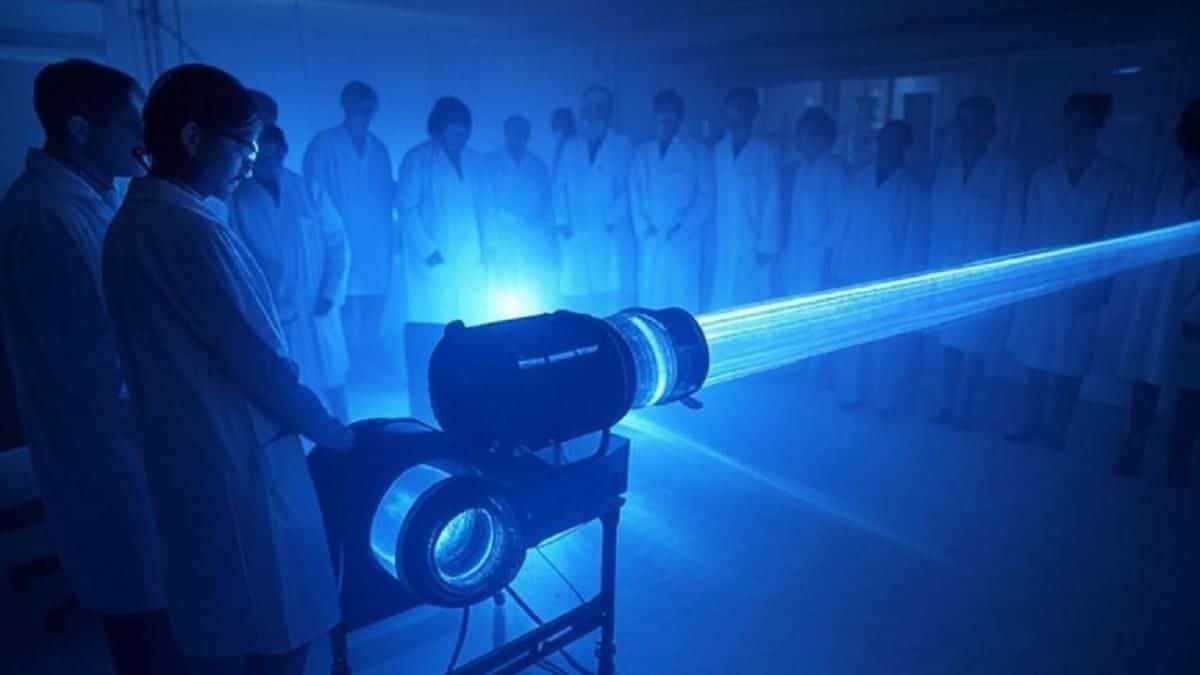The recent discovery of China’s massive fusion laser complex has sent ripples through international security and energy circles. Satellite imagery reveals an ambitious project in Mianyang that potentially surpasses America’s National Ignition Facility in scale and capability. This development raises crucial questions about China’s technological ambitions and the dual-use nature of fusion research.
China’s ambitious fusion facility unveiled through satellite intelligence
In mid-2025, satellite images analyzed by experts at CNA Corp and the James Martin Center for Nonproliferation Studies revealed a massive construction project in Mianyang, China. The Laser Fusion Major Device Laboratory features an impressive design with four extending arms converging on a central experiment chamber, where scientists plan to focus high-powered lasers on hydrogen isotopes to trigger nuclear fusion.
The Chinese facility appears to be approximately 50% larger than the National Ignition Facility in California, demonstrating China’s determination to become a leader in fusion technology. This ambitious scale suggests significant investment and prioritization of fusion research within China’s scientific agenda.
International observers note that several countries are pursuing similar technology, creating a global race for fusion breakthroughs:
- United States (National Ignition Facility)
- France (Laser Mégajoule)
- United Kingdom (Orion Laser Facility)
- Russia (UFL-2M Project)
The discovery has prompted renewed attention to the strategic implications of advanced energy research and its potential dual applications in both civilian and military domains.
12 Warning signs you have too much mental strength (and it's destroying your life)
A 500-Kilogram Metal Ring Plummeted Over Kenya, Confirming Long-Held Suspicions
Dual-purpose potential: between clean energy and military applications
The Mianyang facility sits at the intersection of two critical national priorities: developing sustainable energy alternatives and maintaining military technological advantage. Fusion energy represents the holy grail of clean power generation, promising virtually unlimited energy from the most abundant element in the universe – hydrogen.
However, the technology employed at this facility, known as inertial confinement fusion, shares fundamental principles with nuclear weapons research. Under the Comprehensive Nuclear-Test-Ban Treaty, nations have agreed to halt underground nuclear tests, but fusion research provides an alternative pathway to study nuclear detonation mechanisms without violating these agreements.
| Potential Applications | Civilian Benefits | Military Implications |
|---|---|---|
| Energy Production | Clean, abundant power source | Energy independence for military operations |
| Nuclear Fusion Research | Scientific advancement | Nuclear weapons design refinement |
| Materials Science | New industrial materials | Advanced military hardware development |
William Alberque from the Henry L. Stimson Center has highlighted that facilities like Mianyang allow nations to refine nuclear arsenal capabilities without conducting actual tests. This capability blurs the line between peaceful scientific advancement and military applications.
How to Stop Your Neighbor from Using Your WiFi Without Permission
How Do You Carry Your Bag? What It Says About How Others See You
Global security implications of advanced fusion technology
The emergence of China’s fusion facility has significant implications for international relations and security frameworks. Former Los Alamos National Laboratory director Siegfried Hecker suggests a nuanced view – for countries like the United States with extensive nuclear test data, fusion experiments primarily maintain existing arsenal reliability. For China, with fewer historical tests, the research applications may differ.
Omar Hurricane, Chief Scientist at Lawrence Livermore National Laboratory’s fusion program, emphasizes that scientific progress should remain the primary objective, despite the dual-use potential of fusion research. This perspective highlights the complex balance between promoting beneficial scientific advancement and managing potential security risks.
The development creates strategic considerations for multiple stakeholders:
- American policymakers must recalibrate their understanding of China’s technological capabilities
- International regulatory bodies need frameworks for monitoring dual-use research
- Energy markets should prepare for potential breakthroughs in fusion power generation
- Military strategists must assess implications for nuclear deterrence doctrine
As China continues constructing this massive fusion laser facility, the international community faces critical questions about the future trajectory of both energy innovation and nuclear security. The technological race underway may reshape global power dynamics while potentially offering solutions to humanity’s energy challenges.







